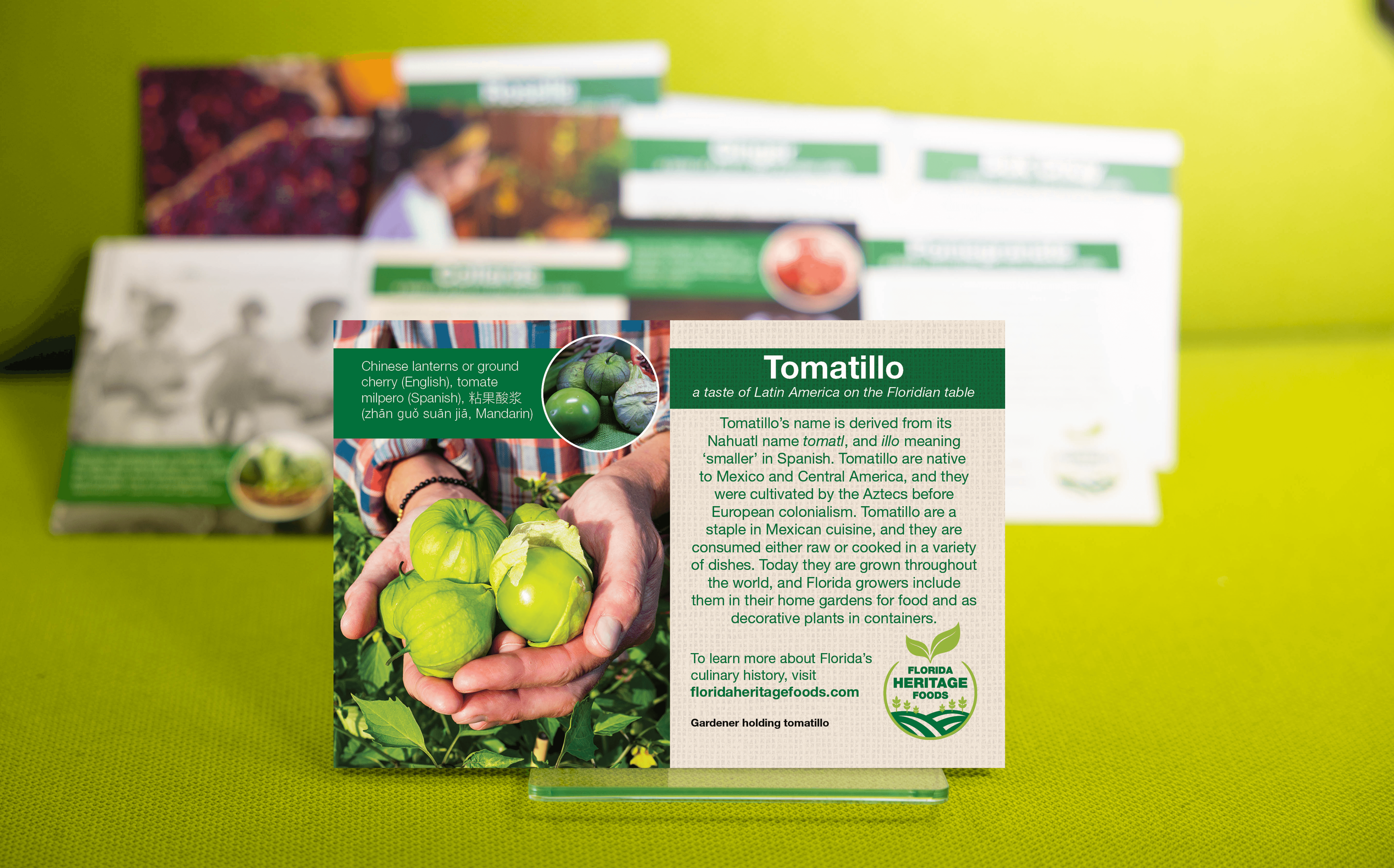Tomatillos
Physalis ixocarpa

Chinese lanterns or ground cherry (English), 粘果酸浆 (zhān ɡuǒ suān jiā, Mandarin, tomate milpero or tomate de cascara (Spanish)
Tomatillo’s name is derived from its Nahuatl name tomatl, and illo meaning ‘smaller’ in Spanish. They are native to Mexico and Central America, and they were cultivated by the Aztecs before European colonialism. They are a staple in Mexican cuisine today, and they are consumed either raw or cooked in a variety of dishes. Today they are grown throughout the world, and Florida growers include them in their home gardens for food and as decorative plants in containers.

Tomatillos are native to Mexico and Central America, and archaeological evidence suggests that they are among the oldest members of the Solanaceae (tomato) family dating 52 million years ago. They were cultivated by the Aztecs prior to European colonialism, and they were an important part of Mayan and Aztec cuisine. They remain an important crop throughout Central America and the Caribbean today, and farmers in the U.S. have grown tomatillos since the middle of the nineteenth century. They were exported to Asia, Australia and Africa in the mid-twentieth century. There are numerous different cultivars with various colors and tastes that include Purple de Milpa, Amarylla, Gigante, Green Husk, Mexican, Pineapple, Rio Grande Verde, and Yellow. Today they are grown in tropical and subtropical regions throughout the world for food and as an ornamental in home gardens and containers.
Tomatillo’s name is derived from its Nahuatl name tomatl, and ‘illo’ meaning ‘smaller’ in Spanish. Like other tomatoes, tomatillos can be harvested while green or ripe, and they are also eaten raw or cooked after the husk is removed. They are most popular in Mexican and Central American cuisine as a base for moles, green sauces, stews, and salsas. They are a key ingredient in green salsa known as salsa verde. Tomatillos have diverse uses in a variety of global fusion cuisines that include soups, salads, marmalades, curries, stir fries, baking, and desserts. In the U.S. they are more commonly used in jams and preserves and dried like cranberries. Throughout Florida, a growing number of specialty chefs are using tomatillo in place of tomatoes to make a variety of unique Latin fusion cuisines.

Tomatillos are rich in vitamins C, A, and K,, dietary fiber, niacin, potassium, manganese, and magnesium.


Plant in spring January through April; and plant in summer July and August by direct sowing seeds or transplanting. Be aware the plants are frost sensitive. Harvest the fruits May through July and September and October.
To plan, a heritage garden, download the ‘Planning a Florida Heritage Garden (PDF).’

Santa Fe College Partnered with Multiple Organizations in a Collaborative Effort to Bring Awareness of the Heritage Plants In Florida.
BY CULTURAL HISTORY
BY GROWING SEASON
DROUGHT TOLERANT PLANTS
Commitment to Equal Access and Equal Opportunity
Santa Fe College is committed to an environment that embraces diversity, respects the rights of all individuals, is open and accessible, and is free of harassment and discrimination. For more information, visit sfcollege.edu/eaeo or contact equity.officer@sfcollege.edu.
SACSCOC Accreditation Statement
Santa Fe College is accredited by the Southern Association of Colleges and Schools Commission on Colleges (SACSCOC). For more information, visit sfcollege.edu/sacscoc.
